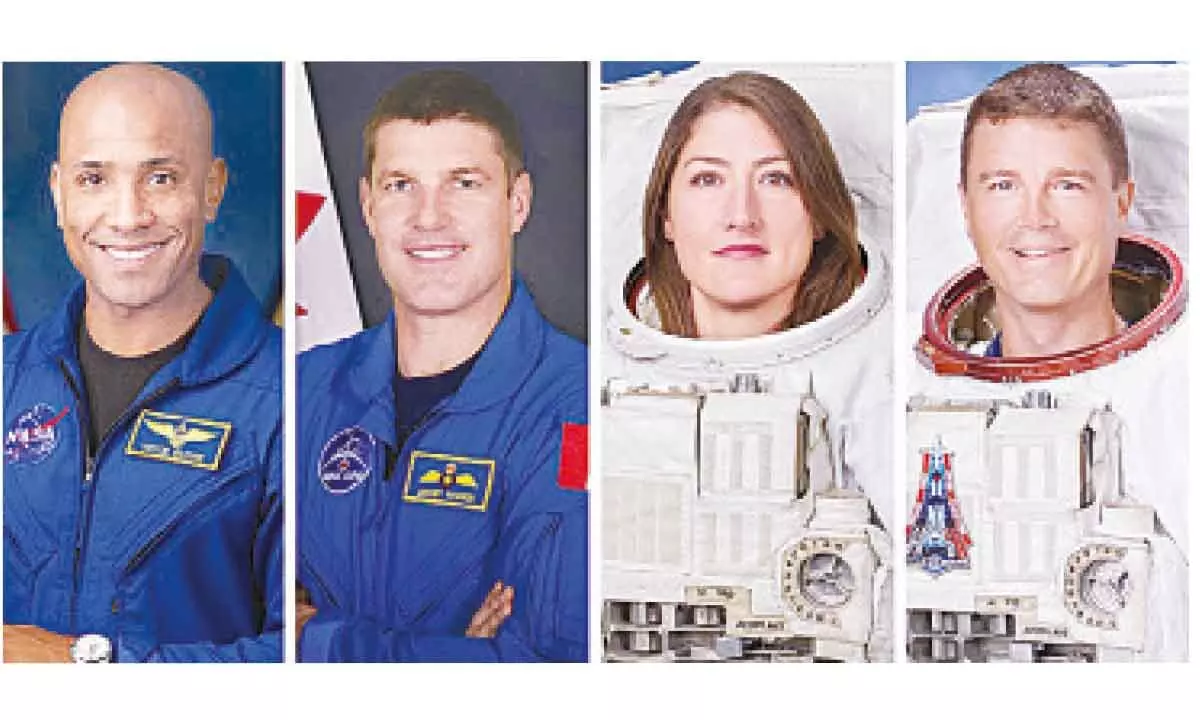Meet the next 4 headed to the Moon

How the diverse crew of Artemis II shows NASA’s plan for the future of space exploration
Maxwell AFB, (US): On April 3, 2023, NASA announced the four astronauts who will make up the crew of Artemis II, which is scheduled to launch in late 2024. The Artemis II mission will send these four astronauts on a 10-day mission that culminates in a flyby of the Moon.
While they won't head to the surface, they will be the first people to leave Earth's immediate vicinity and be the first near the Moon in more than 50 years. This mission will test the technology and equipment that's necessary for future lunar landings and is a significant step on NASA's planned journey back to the surface of the Moon.
As part of this next era in lunar and space exploration, NASA has outlined a few clear goals. The agency is hoping to inspire young people to get interested in space, to make the broader Artemis programme more economically and politically sustainable and, finally, to continue encouraging international collaboration on future missions. From my perspective as a space policy expert, the four Artemis II astronauts fully embody these goals.
Who are the four astronauts?
The four members of the Artemis II crew are highly experienced, with three of them having flown in space previously. The one rookie flying onboard is notably representing Canada, making this an international mission, as well. The commander of the mission will be Reid Wiseman, a naval aviator and test pilot. On his previous mission to the International Space Station, he spent 165 days in space and completed a record of 82 hours of experiments in just one week. Wiseman was also the chief of the US astronaut office from 2020 to 2023.
Serving as pilot is Victor Glover. After flying more than 3,000 hours in more than 40 different aircraft, Glover was selected for the astronaut corps in 2013. He was the pilot for the Crew-1 mission, the first mission that used a SpaceX rocket and capsule to bring astronauts to the International Space Station, and served as a flight engineer on the ISS.
The lone woman on the crew is mission specialist Christina Hammock Koch. She has spent 328 days in space, more than any other woman, across the three ISS expeditions. She has also participated in six different spacewalks, including the first three all-women spacewalks. Koch is an engineer by trade, having previously worked at NASA's Goddard Space Flight Centre.
The crew will be rounded out by a Canadian, Jeremy Hansen. Though a spaceflight rookie, he has participated in space simulations like NEEMO 19, in which he lived in a facility on the ocean floor to simulate deep space exploration. Before being selected to Canada's astronaut corps in 2009, he was an F-18 pilot in the Royal Canadian Air Force.
These four astronauts have followed pretty typical paths to space. Like the Apollo astronauts, three of them began their careers as military pilots. Two, Wiseman and Glover, were trained test pilots, just as most of the Apollo astronauts were. Mission specialist Koch, with her engineering expertise, is more typical of modern astronauts. The position of mission or payload specialist was created for the space shuttle program, making spaceflight possible for those with more scientific backgrounds.
A collaborative, diverse future Unlike the Apollo program of the 1960s and 1970s, with Artemis, NASA has placed a heavy emphasis on building a politically sustainable lunar program by fostering the participation of a diverse group of people and countries. The participation of other countries in NASA missions – Canada in this case – is particularly important for the Artemis program and the Artemis II crew.
International collaboration is beneficial for a number of reasons. First, it allows NASA to lean on the strengths and expertise of engineers, researchers and space agencies of US allies and divide up the production of technologies and costs. It also helps the US continue to provide international leadership in space as competition with other countries – notably China – heats up. The crew of Artemis II is also quite diverse compared with the Apollo astronauts. NASA has often pointed out that the Artemis program will send the first woman and the first person of colour to the Moon. With Koch and Glover on board, Artemis II is the first step in fulfilling that promise and moving toward the goal of inspiring future generations of space explorers. The four astronauts aboard Artemis II will be the first humans to return to the vicinity of the Moon since 1972.
(Writer is Professor of Strategy and Security Studies, Air University)
















